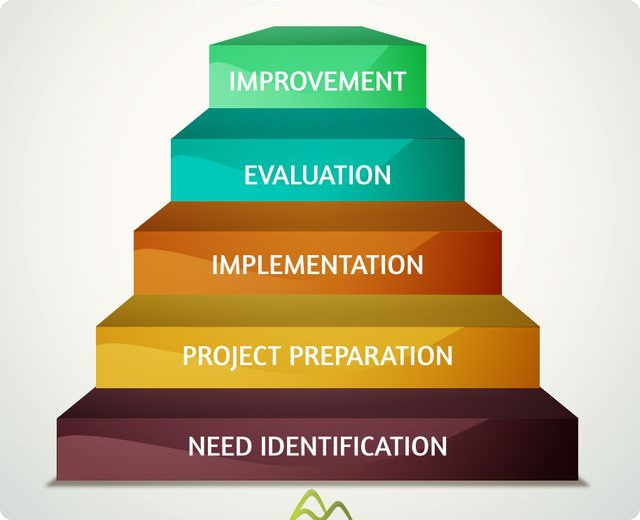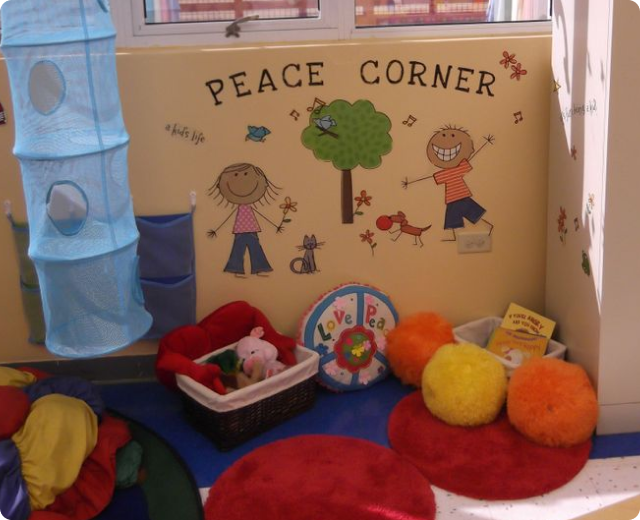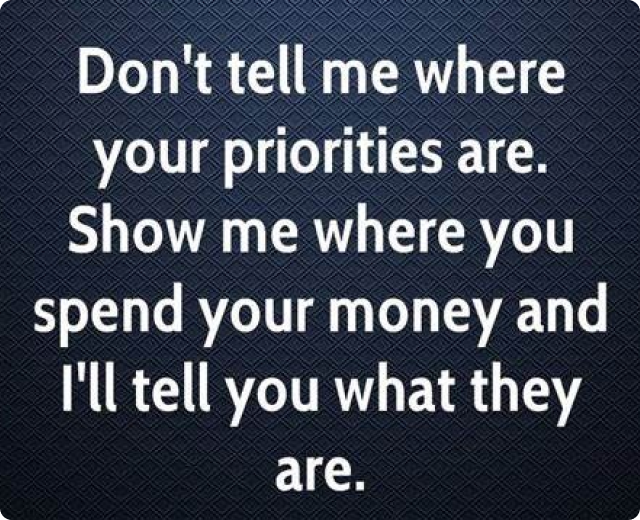DRS

Understanding the Designation Renewal System (DRS)
The Designation Renewal System (DRS) is a critical opportunity for Head Start and Early Head Start programs. While it requires significant effort, it offers the chance to refine your program, ensuring it meets its full potential and maximizes benefits for your community.
Submit details for optimizing the DRS grant process free resource.
Don’t Wait—Start Your DRS Grant Planning Today!
Kick off your DRS grant application process early. The DRS has unique requirements in each of its seven sections, which typically require adjustments to your program. Starting early helps you address these challenges and invest in improvements. Ensure your application stands out by planning ahead and investing in your program now.


Creating an Effective Statement of Need
The foundation of your grant proposal starts with a thorough community assessment. If the community assessment is not current, an investment in updating this assessment would be highly useful. An effective strategy would be to first complete that part of the community assessment required by the grant notice of opportunity.
Enhance your DRS proposal by using pie charts and bar graphs to illustrate community data clearly. Connecting your proposed services to the community’s needs will provide a strong basis for your application and enhance its credibility. An important aspect of the statement of need will be demonstrating how many children within each specific zip code are both age and income eligible for Head Start services. Another important area for an effective statement of need is the documentation of available resources and the relationships your program has developed with other service organizations.
Detailed Description of Head Start Services
Include a thorough explanation of your evidence-based curriculum, the quality of teacher-child relationships, and how you track child development and achievements in your proposal. Discuss your strategies for dual-language learners and the assessment of child and family health outcomes. Connect families with essential health services, including dental and mental health care. Emphasize the significance of family involvement and address family needs and outcomes as key elements in early childhood education.


Safe and Supportive Learning Environment
Establishing a secure and supportive environment is crucial for fostering growth. Head Start provides inclusive classrooms filled with diverse books and learning materials, ensuring every child feels valued and nurtured. The safe and supportive environment rests on positive interactions between supervisors and staff, between teachers and children, and between family workers and families.
Data from internal monitoring, CLASS, and Family Readiness Checklists will demonstrate your safe and supportive learning environment within the DRS Proposal
Ongoing Improvement in Head Start Programs
Evaluating past performance is a critical step in securing the DRS grant. Sunshine Nonprofit Solutions begins the DRS process by reviewing the Federal review results and working with the Head Start program to address root causes of each non-compliance.
Appreciative Inquiry (AI) is a powerful framework that Sunshine Nonprofit Solutions employs to enhance the effectiveness of Head Start programs. Unlike traditional problem-solving approaches that focus on identifying and addressing weaknesses, AI centers around amplifying an organization’s strengths. By looking at what works well and envisioning ways to build upon those successes, AI fosters a positive, forward-thinking mindset. This philosophy not only helps in recognizing and appreciating existing strengths but also leverages these assets to drive innovation and improvement.
Sunshine Nonprofit Solutions has found Appreciative Inquiry to be particularly effective in improving Head Start programs within the DRS process. By engaging leadership teams in collaborative dialogues that highlight past achievements and existing capabilities, AI creates a shared vision for the future. This strengths-based approach has been instrumental in identifying best practices and scaling them across different areas of the program. The result is a more cohesive, motivated team that is better equipped to meet the needs of the children and families they serve, ultimately leading to improved outcomes and greater program sustainability.


Head Start Workforce Strategy
Your proposal will include an in-depth staff description covering education, experience, and competencies. Most importantly, your proposal will highlight the mental health support your provide all employees.
Providing effective mental health supports moves beyond “mental health days” and distribution of information. Demonstrate how your organization prioritizes the mental health and overall well-being of your staff.
Key components to address include a living wage and a generous benefits package that ensures their financial security. Relative pay equity that ensures fair compensation across roles is important. Describe how your environment is caring and nurturing, treating each individual with respect and understanding. Discuss your research-based nonjudgmental coaching (for teachers and other staff) to help staff reach their full potential. Include how professional development opportunities are crafted to be meaningful and aligned with personal career goals, and emphasize how positive feedback mechanisms are designed to foster continuous improvement.
A key component of mental well-being is a focus on structured breaks and streamlined paperwork that helps prevent burnout and maintain a healthy work-life balance.
Describe how sharing a clear, inspiring vision with our team not only unifies the team, but also motivates our employees by giving them a sense of purpose. Include how you foster an environment where staff feel valued, supported, and empowered, and your goal to create a workplace culture where everyone can thrive both personally and professionally.
Strategic Head Start Budgeting
When applying for the DRS proposal, creating a detailed and well-structured budget is crucial. It not only demonstrates your understanding of the program’s financial needs but also showcases your ability to manage funds efficiently and achieve program goals.
Your budget should be broken down into clear, itemized categories. For a Head Start program, consider including the following:
Salaries, Wages and Benefits (80% of Budget)
Personnel costs are typically the largest part of the budget. This includes salaries and wages for teachers, administrative staff, support staff, and any other personnel involved in the program.
- Teachers: Salaries, benefits, and stipends
- Administrative Staff: Program directors, coordinators, and office staff
- Support Staff: Classroom aides, janitors, and kitchen staff
Administrative Costs (<15% of Budget)
Ensure that administrative costs remain within the allowed limit. This category includes expenses related to the management and operation of the program.
Training and Technical Assistance
Allocate a portion of the budget for professional development and training to ensure staff are well-equipped to meet program standards.
- Professional Development: Series of workshops, professional certification and individualized coaching are all important aspects of professional development
- Technical Assistance: Support for using new technologies and methodologies
2.4 Program Resources and Family Development
Funds should be dedicated to creating a positive learning environment and supporting family involvement.
- Classroom Supplies: Educational materials, toys, and books
- Family Resource Centers: Resources to assist families in need
- Family Training: Workshops and educational sessions for parents
Health Services and Partnerships
Partner with multiple health service providers to ensure comprehensive health services for children.
- Health Screenings: Vision, hearing, and dental check-ups
- Partnership Contributions: Collaborations with local health providers
Technology
Invest in technology that streamlines paperwork and increases overall efficiency.
- Software: Programs for managing student records, attendance, and curriculum planning
- Hardware: Emphasize tablets and scanners while reducing the need for desktops and copier machines
Donations and In-kind Contributions (20% of Budget)
Include a detailed description of donations of goods, services, and cash from community partners
- Goods: Educational materials, furniture, and supplies
- Services: Volunteer time, pro bono services from professionals
- Cash Donations: Financial contributions from local businesses and individuals
Align Budget Priorities with Program Goals
Ensure that your budget priorities reflect the primary goals of the Head Start program. Focus on providing adequate resources for creating a positive learning environment, supporting family engagement, and ensuring the well-being of children.
Ensure Costs are Reasonable and Allowable
All costs in the budget must be reasonable, necessary for the program, and allowable under the grant guidelines. Avoid including any expenses that could be seen as excessive or unrelated to the program’s objectives.
Prepare an Itemized Line Item Budget
Create a detailed line item budget that breaks down each category into specific expenses. This level of detail demonstrates your thorough planning and ensures transparency in how the funds will be used.
Justify Each Expense
In your budget narrative, provide a justification for each expense. Explain how each cost contributes to achieving the program’s goals and why it is necessary for the success of the program.
Crafting a comprehensive budget for a Head Start program grant proposal requires careful planning and attention to detail.
Strategic Head Start Budgeting
When applying for the DRS proposal, creating a detailed and well-structured budget is crucial. It not only demonstrates your understanding of the program’s financial needs but also showcases your ability to manage funds efficiently and achieve program goals.
Your budget should be broken down into clear, itemized categories. For a Head Start program, consider including the following:
Salaries, Wages and Benefits (80% of Budget)
Personnel costs are typically the largest part of the budget. This includes salaries and wages for teachers, administrative staff, support staff, and any other personnel involved in the program.
- Teachers: Salaries, benefits, and stipends
- Administrative Staff: Program directors, coordinators, and office staff
- Support Staff: Classroom aides, janitors, and kitchen staff
Administrative Costs (<15% of Budget)
Ensure that administrative costs remain within the allowed limit. This category includes expenses related to the management and operation of the program.
Training and Technical Assistance
Allocate a portion of the budget for professional development and training to ensure staff are well-equipped to meet program standards.
- Professional Development: Series of workshops, professional certification and individualized coaching are all important aspects of professional development
- Technical Assistance: Support for using new technologies and methodologies
2.4 Program Resources and Family Development
Funds should be dedicated to creating a positive learning environment and supporting family involvement.
- Classroom Supplies: Educational materials, toys, and books
- Family Resource Centers: Resources to assist families in need
- Family Training: Workshops and educational sessions for parents
Health Services and Partnerships
Partner with multiple health service providers to ensure comprehensive health services for children.
- Health Screenings: Vision, hearing, and dental check-ups
- Partnership Contributions: Collaborations with local health providers
Technology
Invest in technology that streamlines paperwork and increases overall efficiency.
- Software: Programs for managing student records, attendance, and curriculum planning
- Hardware: Emphasize tablets and scanners while reducing the need for desktops and copier machines
Donations and In-kind Contributions (20% of Budget)
Include a detailed description of donations of goods, services, and cash from community partners
- Goods: Educational materials, furniture, and supplies
- Services: Volunteer time, pro bono services from professionals
- Cash Donations: Financial contributions from local businesses and individuals
Align Budget Priorities with Program Goals
Ensure that your budget priorities reflect the primary goals of the Head Start program. Focus on providing adequate resources for creating a positive learning environment, supporting family engagement, and ensuring the well-being of children.
Ensure Costs are Reasonable and Allowable
All costs in the budget must be reasonable, necessary for the program, and allowable under the grant guidelines. Avoid including any expenses that could be seen as excessive or unrelated to the program’s objectives.
Prepare an Itemized Line Item Budget
Create a detailed line item budget that breaks down each category into specific expenses. This level of detail demonstrates your thorough planning and ensures transparency in how the funds will be used.
Justify Each Expense
In your budget narrative, provide a justification for each expense. Explain how each cost contributes to achieving the program’s goals and why it is necessary for the success of the program.
Crafting a comprehensive budget for a Head Start program grant proposal requires careful planning and attention to detail.

Maximize Your DRS Grant Potential with Sunshine Nonprofit Solutions
At Sunshine Nonprofit Solutions, we specialize in securing your DRS grant. We update your community assessment, emphasize your program’s strengths, and document improvement strategies. Our expert team streamlines your planning, implementation, and staff training processes. Interested? Book a no-cost, no-obligation consultation today. We look forward to working with you to ensure your program’s success in the re-competition process.
